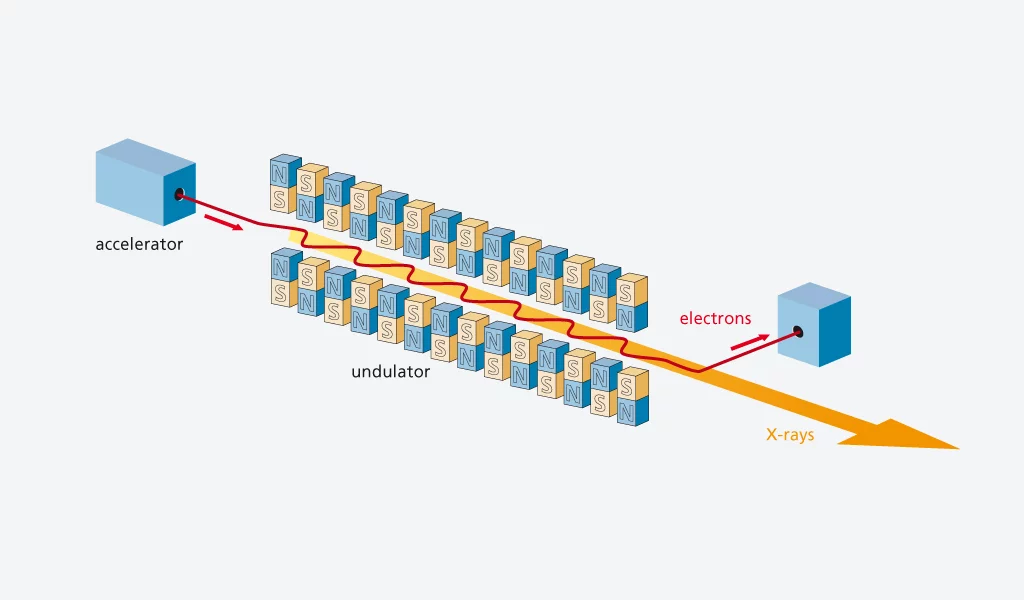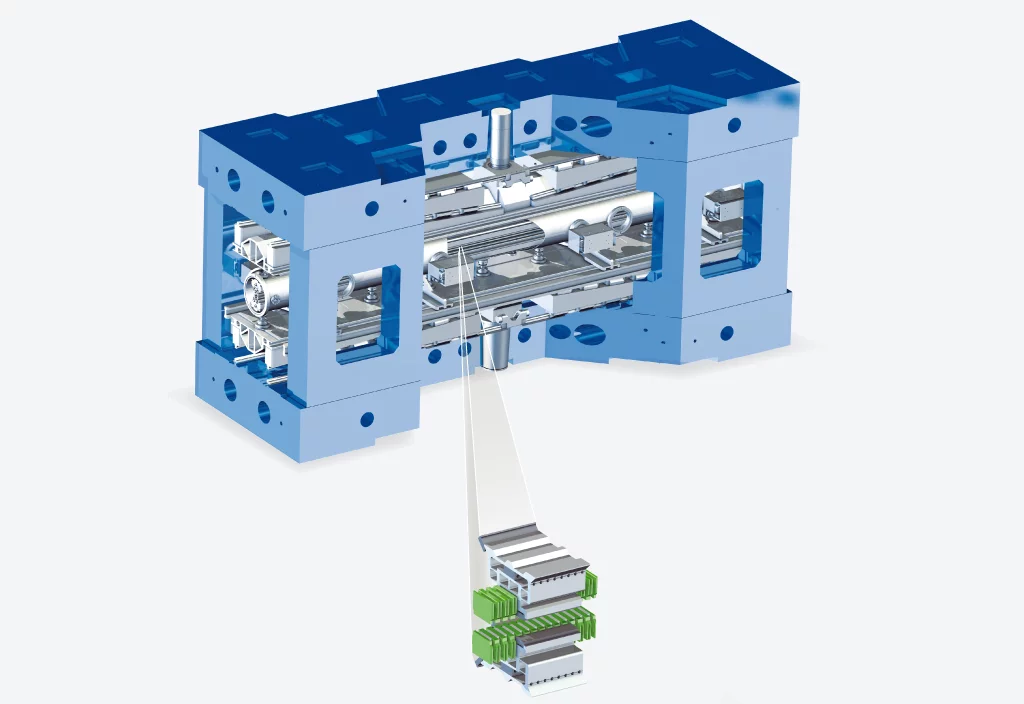X-ray light is produced in SwissFEL when electrons accelerated in its linear accelerator are forced to follow a wavy path. This takes place within the undulators – regular arrangements of magnets that bend the electron beam. The whole undulator section will be 60 metres long.
The X-ray light created in SwissFEL will be produced in the facility's undulator section. Here, the fast electrons will be forced to follow a wavy path, which makes them emit X-ray light. To achieve this, one uses the fact that fast electrically charged particles are deflected by magnets. The undulators therefore consist of two rows of magnets, one above the other, and the electrons fly through between them – the magnets are so arranged that the electrons are alternately deflected in one direction and then in the other, which results in a sinusoidal path being produced.
At SwissFEL, there will be two undulator sections, each of them producing X-ray light with different characteristics – one for "hard" X-ray beams, with a short wavelength, and one for "soft" X-ray beams, with a longer wavelength. According to the scientific question being investigated, one or other of these types of light will be used for experiments.
The undulator section for hard X-rays will be a total of 60 metres long. The period of the electron path, meaning the section along which the electrons move once to the left and once to the right, will be 1.5 centimetres long. In order that the X-ray light is correctly produced, each of the many thousands of magnets must be aligned to a precision of fractions of a millimetre.
The undulator magnets will be arranged so that they can be moved – in this way, the characteristics of the light can be varied when the positions of the magnets are altered.
After they have passed through the undulator section, the electrons are no longer needed and will be caught by a beam stop. The X-ray light, on the other hand, passes on to the experimental stations, where it will be used for experiments.
Text: Paul Piwnicki
Additional information
- Swiss high precision stabilises SwissFEL: press release about collaboration on building undulators
- Slalom run for SwissFEL: interview about undulator development for SwissFEL in the magazine “Fenster zur Forschung” (In German only).


